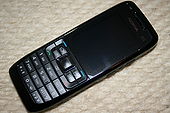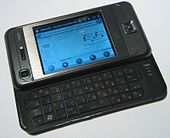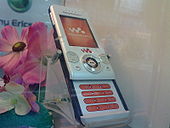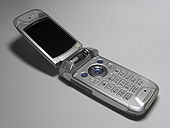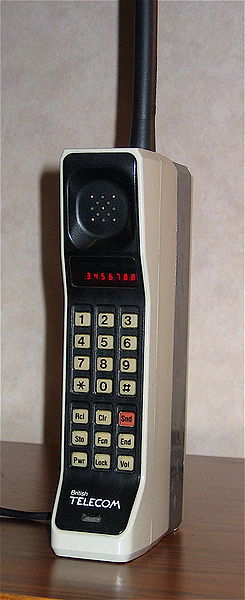Cellular Technical Terms Explained
Why the Author Wrote this Hub
January 24, 2011
After writing a large number of articles about cellular providers and phones it occurred to the author that a lot of the terms used have little or no meaning to the average reader.
This hub will attempt to remedy that problem.
It will cover what phone types there are, the types of networks used, attempt to explain the short-hand terms that providers use (such as LTE [Long Term Evolution], and what that acronyms actually stand for.
Some of this will be technical in nature, but if that's daunting, just keep reading past the jargon; this writer will do his best to explain.






Form Factors
A form-factor is the size and shape of an object. A toaster has a form-factor, a television does, as do many other appliances in our homes, offices, and out in the world on the street.
A name for a form-factor is short-hand for a ready means of identifying the shape of a phone by using one word. Terms include "flip" or "clamshell," "candybar," "slate," and "slider." There was another form-factor called "brick," but it had to do with the dimensions necessary to contain the older circuitry and is no longer used.
Most make perfect sense, a "candybar" phone is about the size and shape of a Hersheytm bar though they will certainly be thicker.
"Flip" or "clamshell" simply means the phone has a hinged lid that folds over on top of the body of the phone. A "flip" phone is twice as tall open as when closed.
"Slate" is a slightly larger phone, but still in the rough dimensions of a candybar. The word "slate" comes into play more for how you interact with the phone than its shape. As with a chalk slate, the user typically interacts with the phone by touching its face rather than buttons; though these phones can still have buttons.
Finally "slider" can have subcategories. A slider typically has a keyboard that slides out of the body of the phone. A "side-slider" means the keyboard slides out of the side and with a "bottom-slider" they keyboard slides out from the bottom.
"Brick" is now an archaic term that applied to the very first cellular phones. Rather that explain that one simply look at the last picture in the set of thumbnails at the upper right. Of course, it is about the size and shape of a building brick.
There are other form-factors, but they are rare and not often seen. These are "swivel" and "mixed."
Cellular Generations
First Generation (1G)
First generation mobile phones, 1G, were analog devices that sent signals via radio waves. Cellular phones still use radio signals today, but the radio signals are now digital rather than analog. These phones were introduced to the public in the 1980s and continued to be used, until the second generation in 1991.
An analog signal can be picked up by anyone with radio equipment and listened to. In other words, first generation cellular phone calls could be intercepted and listened to, with nothing more than a radio that could tune into the radio signal of the phone. Of course, this meant that the calls were not private. Worse, one never know who might be listening in.
Second Generation (2G)
Second generation phones were introduced in Finland in 1991. The method of sending digital signals was named Global System for Mobile Communications (GSM) and provided a far more secure means of sending and receiving voice communications. A side benefit is/was that more information can/could be sent digitally than via analog signals. This, in turn, made the systems more efficient.
GSM is still used today and accounts for approximately one point six (1.6b) billion subscribers globally.
Third Generation (3G)
In 2000 a new set of standards established by the International Telecommunication Union (an agency of the United Nations) determined what the next set of specifications for cellular communications must be. Services rendered had to combine and support voice, internet, video calling, pictures and text all in a mobile setting. Additionally the system had to support two hundred (200Kbp/s) kilobits per second (about twenty-five thousand characters per second) and support simultaneous voice and data communications.
As such the signal also had to support mobile computing devices as well as cellular phones.
These standards were first adopted in 2001 with the implementation of Universal Mobile Telecommunications System (UMTS) in Europe, Japan, and China.
GSM was updated to GSM 2G (though it is still called GSM). It was quickly adopted worldwide and is now the most common set of communications standards in mobile telephony.
UMTS and GSM are further broken down in to very specific methods of distributing digital information to multiple devices on the same radio frequency. By encoding the segments of a signal for a specific phone, multiple signals can be sent simultaneously. Each phone will intercept its own signal by a predetermined code that the cellular station and phone agree on automatically. This method further increases efficiencies in communications by packing more data into a single signal.
This is called Code Division Multiple Access or CDMA.
Sub methodologies are:
- Wideband Code Division Multiple Access (W-CDMA)
- Time Division Synchronous Code Division Multiple Access (TD-SCDMA)
- Evolved High-Speed Packet Access (HSPA+)
- Long Term Evolution (LTE)
Other methods of high-speed simultaneous voice and data transmission include:
- Enhanced Data rates for GSM Evolution (GSM EDGE)
- Worldwide Interoperability for Microwave Access (Wi-MAX)
These last two transmission methods are not as widespread or popular as the four immediately above.
Fourth Generation (4G)
Fourth Generation phones are required to have data rates of one Gigabyte (1Gb/s) per second (125,000 characters per second) for pedestrians (the term used in the specification) and up to one hundred megabits (1Mb/s) per second for automotive (trains, boats, cars, etc.). This standard was established by ITU Radiocommunication Sector (ITU-R) a division of the International Telecommunication Union.
Despite heavy advertising, there are no 4G phones or providers as of this writing.
No single cellular company offers data rates in the 1Gigabit range. For that reason there are no 4G networks.
Mobile WiMAX, released in 2006 and Long term evolution (LTE), released in 2009 are often branded as 4G, but neither network meets the requirements of data transmission rates of up to 1 Gigabits per second, for that reason they are still 3G signals. However, both Wi-MAX and LTE have the potential to meet the 1GHz speed requirement.
That said, though both of the above networks have the potential to meet the speed requirements set down ITU, they have not, as yet, because the 1GHz data rate is the primary definition of 4G systems. None of the systems above meet the 4G requirement established b the ITU.
Summary
- First generation (1G) phones supported wireless communications, but were not digital
- Second generation (2G) phones supported wireless communications digitally
- Third generation (3G) phones support multiple use digital signals (voice and data simultaneously) at two hundred thousand bits per second (25,000 characters per second); 3G supports Internet access, video and voice, and text messaging, often simultaneously
- Fourth generation (4G) phones do not as yet exist.
Cellular Signals and Distribution
Since a cellular phone is basically a radio transmitter and receiver, and there are quite literally billions of cellular users, getting the most information into a signal is important. In the beginning one signal was sent to the phone and another from the phone. It wasn't that important to divide the signal between devices as there weren't that many cellular users.
Over the years, this has changed. In order to service the largest number of users dividing that signal into packets of information and directing those packets to individual phones became vital.
Today, all cellular signals sent to and from phones work on this concept. One signal sent on one frequency can service multiple phone users. Each phone, in turn, can send back a signal, identified as originating from that handset alone, so that the incoming and outgoing signals are tailored to that specific handset.
To do this signals have to have addresses encoded within them for specific phones.
This, in turn, requires the phone to recognize and discriminate between addressed signals so that the handset is only using one of the many broadcast signals sent simultaneously.
All of this has to occur automatically too, such that the cellular user can send and receive calls without a any technological knowledge to do so.
Net Effects
By spreading cellular calls to a single signal channel providers can pack more information into less signal. This cuts down on the cost of cellular towers and base stations since fewer are needed to support more users.
If there is high call volume or many calls are being made from an area with a limited number of signals calls can be dropped or the user won't be able to place a call at all.
This is why these systems seem to fail in times of crisis such as floods, earthquakes, and other natural disasters. The number of users attempting to use the systems simultaneously increases geometrically and the infrastructure cannot handle that many requests.
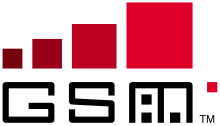
Global System for Mobile Communications (GSM)
Global System for Mobile Communications (GSM) remains the world's most popular standard for mobile communications. It is estimated that one point six (1.6b) billion subscribers, in two hundred twelve (212) different countries use the GSM standard on their cellular phones.
This GSM signal standard is so ubiquitous that cell phone subscribers can roam freely thoughout most of the world using the same handset. It also means that switching carriers does not require changing phones. To put this another way a consumer on GSM can buy one phone and retain that one phone while switching from one cellular company to another.
GSM is also economically viable to carriers as there is a huge market of infrastructure equipment dedicated to GSM. This gives carriers a large base of manufacturers to buy equipment from. This, in turn, gives the carrier a competitive edge when negotiating the price of that equipment as there is a great deal of competition amount infrastructure manufacturers to sell GSM equipment.
How it Works
In the simplest terms it became necessary to sub-divide cellular signals so that one broadcast stream could support multiple phones or users. To do this two things had to happen.
One, transmission speed had to be increased. Frequencies for GSM are 900 MHz (MegaHertz) or 1800 MHz bands. If those two bands are already allocated then 850 MHz and 1900 MHz. In Europe, because the four bandwidths above are already in use, the carrier frequency is in the 2100MHz range.
Two, addressing had to be added so that portions of one signal could be sub-divided among a number of phones. The addressing is handled in the phone by a subscriber identity module (SIM) card or built into the phone and programmed upon purchase. Each frequency (paragraph above) is divided into eight full rate speech channels or sixteen half-rate speech channels. This is further subdivided by frequencies going up to the tower and frequencies flowing from the tower to the phone.
As you can see from the table below the starting frequency is the base with 10Mhz spanning from the base frequency to its upper limit.
System
| Band (MHz)
| Uplink (MHz)
| Downlink (MHz)
| Channel number
|
|---|---|---|---|---|
T-GSM-380
| 380
| 380.2-389.8
| 390.2-399.8
| dynamic
|
T-GSM-410
| 410
| 410.2-419.8
| 420.2-429.8
| dynamic
|
GSM-450
| 450
| 450.4-457.6
| 460.4-467.6
| 259-293
|
GSM-480
| 480
| 478.8-486.0
| 488.8-496.0
| 306-340
|
GSM-710
| 710
| 698.0-716.0
| 728.0-746.0
| dynamic
|
GSM-750
| 750
| 747.0-762.0
| 777.0-792.0
| 438-511
|
T-GSM-810
| 810
| 806.0-821.0
| 851.0-866.0
| dynamic
|
GSM-850
| 850
| 824.0-849.0
| 869.0-894.0
| 128-251
|
P-GSM-900
| 900
| 890.2-914.8
| 935.2-959.8
| 1-124
|
E-GSM-900
| 900
| 880.0-914.8
| 925.2-959.8
| 975-1023, 0-124
|
R-GSM-900
| 900
| 876.0-914.8
| 921.0-959.8
| 955-1023, 0-124
|
T-GSM-900
| 900
| 870.4-876.0
| 915.4-921.0
| dynamic
|
DCS-1800
| 1800
| 1710.2-1784.8
| 1805.2-1879.8
| 512-885
|
PCS-1900
| 1900
| 1850.0-1910.0
| 1930.0-1990.0
| 512-810
|
In this table uplink means from the phone and downlink to the phone
Code Division Multiple Access (CDMA)
Code Division Multiple Access is a method where each cellular user is assigned a particular code when the call is accepted or made. This code is "wrapped" around the voice data packet so that the phone it is intended for accepts that particular signal and none others. All other coded signals are automatically rejected by the phone not having its particular code. This way a signal sent on a particular frequency support eight (8), sixteen (16), thirty-two (32_ or more cellular calls, but only one of those is recognized by an individual handset.
CDMA is currently used by Alltel, Cellcom, Cricket Communications, Leap, Sprint, and Verizon Wireless in the United States as well as Claro Wireless in Puerto Rico.
Time Division Synchronous CDMA (TD-SCDMA)
This is primarily a Chinese only system. It is, for all intents and purposes, a CDMA system.
Enhanced Data rates for GSM Evolution (GSM EDGE)
Enhanced Data rates for GSM Evolution allows improved data rates over GSM and is backward compatible with GSM. The overall effect of GSM EDGE is increased data rates over existing channels. The improvements offered by EDGE give carriers three times the capacity of the original GSM networks.
Currently AT&T, after it's acquisition of Cingular, uses GSM EDGE. It is also a near defacto standard in Europe and Asia.
EDGE does require some additional hardware to be installed on the base station, but many of those stations already had EDGE enhancements when shipped. This means carriers with the newer hardware only need give the base station a software instruction to begin using EDGE.
Evolved High-Speed Downlink Packet Access (HSDPA+)
High Speed Downlink Packet Access is another CDMA methodology that attempts to improve the performance of CDMA.
Current providers using HSDPA are AT&T, Verizon, and T-Mobile.
Most of the performance improvement comes from reducing the amount of time between the call being made and actually initiated. HSDPA also has higher transmission speeds with fourteen Megabits per second (14Mbs/) streaming down from the cellular provider and five point eight Megabits per second (5.8Mbs/s) streaming up from the handset.
Other improvements with HSPA are:
- shared channel transmission
- shorter transmission time (less lag & better round-trip time)
- fast call scheduling (makes calls quicker to connect)
- fast retransmission (increases capacity)
- higher modulation rates (which improves the quantity of data transmitted)
Almost all of the HSPA improvements can be made without modifying the existing hardware. Changes in cellular provider software can accomplish almost all of the improvements above.
Long Term Evolutions (LTE)
Long Term Evolution (LTE) is a mobile broadband system for cellular communications. As such it is similar to Wi-MAX in speed, but is not designated WiFi.
Currently Metro-PCS, Verizon, and AT&T use LTE.
LTE, as specified can support maximum download speeds of up to three hundred twenty ( 320Mps/s) Megabits per second and maximum upload speeds for eight six (86.4Mbps/s) Megabits per second.
It will support up to two hundred (200) users per 5MHz of active cell.
It is also a distance champion at distances of one (1km) kilometer (city), five (5km) kilometers (urban), and up to and exceeding thirty (30km) kilometers in rural settings.
Worldwide Interoperability for Microwave Access (Wi-MAX)
Worldwide Interoperability for Microwave Access (Wi_MAX) allows improved data rates over wireless Internet. It is an addition to the IEEE 802.11b/g/n wireless data standard. As such it is not really a celluar signal, but a means of wirelessly transferring data to and from the Internet.
Wi-MAX in the United States is supported by AT&T Alaska, Clearwire (Sprint, TimeWarner & Comcast) and Xandoo (Texas & Oklahoma).
Interestingly enough, Wi-MAX is in contention as a replacement to cellular signals for both voice and data transmission as the 4G, when finally meeting 4G specifications.
The IEEE designation for Wi-MAX is 802.16 (rather than 802.11). It is meant as an alternative to cable and DSL modem (wired connections). The original standard 802.16b is for fixed implementations and is therefore NOT Wi-MAX. The 802.11g specification is geared strictly to wireless data transfer and is therefore Wi-MAX; or Mobile Wi-MAX.
Wi-MAX operates in the 10GHz to 66GHz ranges making it the current high speed leader. With these high data transfer speeds Wi-Max can support streaming high-quality video. Unlike WiFi, Wi-MAX has much greater geographic range without losing the amount of data that can be transmitted per second. e.g. many kilometers instead of many meters.
Understanding the Jargon
There is a lot of jargon when talking about these terms. But it is really simple once the reader gets the basic idea.
Imagine that the voice data can be packaged like a letter in an envelope.
The letter itself is rather personal and targeted to a specific person, but without the envelope anyone can read it. Once an envelope is wrapped around the letter, only the intended recipient can get it or is supposed to.
The envelope, in this metaphor, is the address (or packet address) that the cellular provider and cellular phone use to distinguish one message from another. The letter is the data the address is wrapped around. Because both the phone and the provider recognize this "packet address," only one cellular phone will be able to "hear" the message and respond to it. Since the phone hears all of the signals (or sees all the envelopes) in its area it needs to know which packet to use and which others to ignore. The message or packet (letter in this metaphor) contains the digitized voice information.
With each call the phone is "told" to only accept a message with a particular code (address on the envelope) while the other messages are ignored.
All other methodologies flow from the attempt to get more distance and/or a larger number of voice calls over a single signal. This is the purpose of all of the GSM sub-types above.
The negative effect of all of these sub-divisions in packet delivery is that a phone that uses LTE will not recognize or use CDMA, HSPDA, or other methods of transmission. This, in turn, means the AT&T phone you buy won't work on Sprint or Verizon or the other way round.
Look at the table below for data rates an other terms relating to data speed.
Term
| Meaning
| Generation
|
|---|---|---|
Hertz
| Cycles per second
| |
Kilo
| 1 Thousand Hertz
| 1G
|
Mega
| 1 Million Hertz
| 2G & 3G
|
Giga
| 1 Billion Hertz
| 4G
|
Example. 1GigaHertz is one billion cycles a second
Coda
The author realizes that this is still pretty complicated so commentators are more than welcome to offer suggestions on how to simplify this hub in the comments section below.
Disclaimer
The author was not compensated in any way, monetarily, with discounts, or freebies by any of the companies mentioned.
Though the author does make a small profit for the word count of this article none of that comes directly from the manufacturers mentioned. The author also stands to make a small profit from advertising attached to this article.
The author has no control over either the advertising or the contents of those ads.

